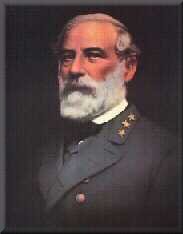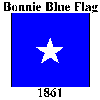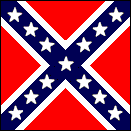|
|
|
|
|
A TASTE OF
THE OLDLINER MAGAZINE
ISSUE TWO
|
|
|
|
|

Fascinating Articles from the American Civil War
Researched and written by Philip Day And Trevor
Stevens
Of The 1st
Maryland Infantry C.S.A. U/K
1. Canton - This is the square or rectangle placed on the top of the flag next to the pole or staff.
2. Border - This is the flag edging when rendered in a different colour to the field.
3. Field - This is the main part of the flag.
4. Fimbration - This is the narrow edging used to separate different colours on the flag; often it is white.
5. Hoist - This is the side of the flag next to the staff.
6. Fly - This is the side of the flag away from the staff .
7. Obverse - This the side of the flag flying with the hoist on the left and the fly on the right.
8. Reverse - This is the side of the flag flying with the hoist on the right and the fly on the left.
9. Stave - This is the staff itself.
10. Finial - This is the metal top to the stave, usually an eagle, spearhead, axe head or cross.
11. Cords - These are ornamental tassels hanging from the finial.
12. Ensign- These are national flags flown on a ship.
13. Jacks - These are small flags flown at the bow of a ship in port.
14. Colours - These are flags carried by an infantry or foot artillery regiment.
15. Standards - These flags are carried by a mounted unit.
16. Camp Colours - These very small flags used to indicate the location in camp of a unit.
17. Flags - This is the generally accepted term for
all cloth insignia flown over a building.
THE BONNIE BLUE

The Bonnie Blue - This was the first flag to represent
the seceding Southern states. It had a blue field with a single white
five pointed star in its centre. This flag was first displayed during the
Convention of the People in Mississippi on 9 January 1861 as the flag of
the Republic of Mississippi.
Although this design was used by several southern
states, and became a southern symbol, it was never adopted by the Confederacy
as a whole.
The First National Flag
![]()
This was the first flag to represent the Confederacy
as a whole. it consisted of a red field with a white space extending horizontally
through the centre equal in width to one third of the flag. A square
blue canton was placed on the stave side extending down to the top of the
lower red band. In the canton was placed a circle of white stars
representing the number of states in the Confederacy. Two men claimed
to have designed this flag, Nickola Marschall, a Prussian artist living
in Montgomery and Orren R Smith from North Carolina. Both claim are
being disputed still to this day. It was the first flown on 4 March
1861.
The Second National Flag
![]()
The Third National Flag
![]()
From the first day the Second National was run up
the flagpole, complaints were made about its appearance. The most
serious was that on a windless day anc the flag hung limp it resembled
a white flag of truce. A red bar one third the width was added to
the fly.
Battle Flags

During the lst Battle of Manassas, there was much confusion
between different states, militia on both sides due to the similarity of
flags. To solve this problem, Congressman William Porcher Miles suggested
to General Beauregard he adopt as a battle flag the pattern he designed
for the First National flag, a pattern Congress had rejected twice.
On 21 August 1861, Miles sent Beauregard a drawing for his suggested flag,
adding that his design called for the ground red, the cross blue, edged
in white and white stars. Beauregard liked the design. He wrote
to Miles on 4 September 1861 saying that he needed to authorise Generals
in the field to furnish their troops with a "field or battle flag".
The first battle flags were made at the end of September
1861. Infantry versions were to be 48 inches square, Artillery, 36
inches and Cavalry, 30 inches. Due to the fact that not all flags
were made by official contractors, the flags varied in colour, material,
size and shape, nevertheless, all were borne with honour by their respective
regiments.
DID YOU KNOW
That the first flares for marksmen shooting at night
were calcium lights developed by
Major H Edge of the Berdan,s Sharpshooters.
|
|
|
|
|
|